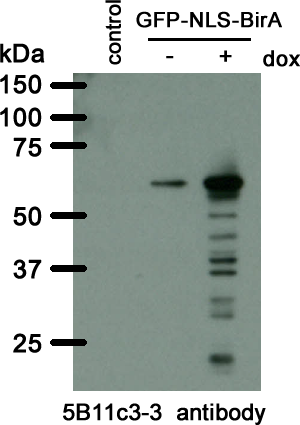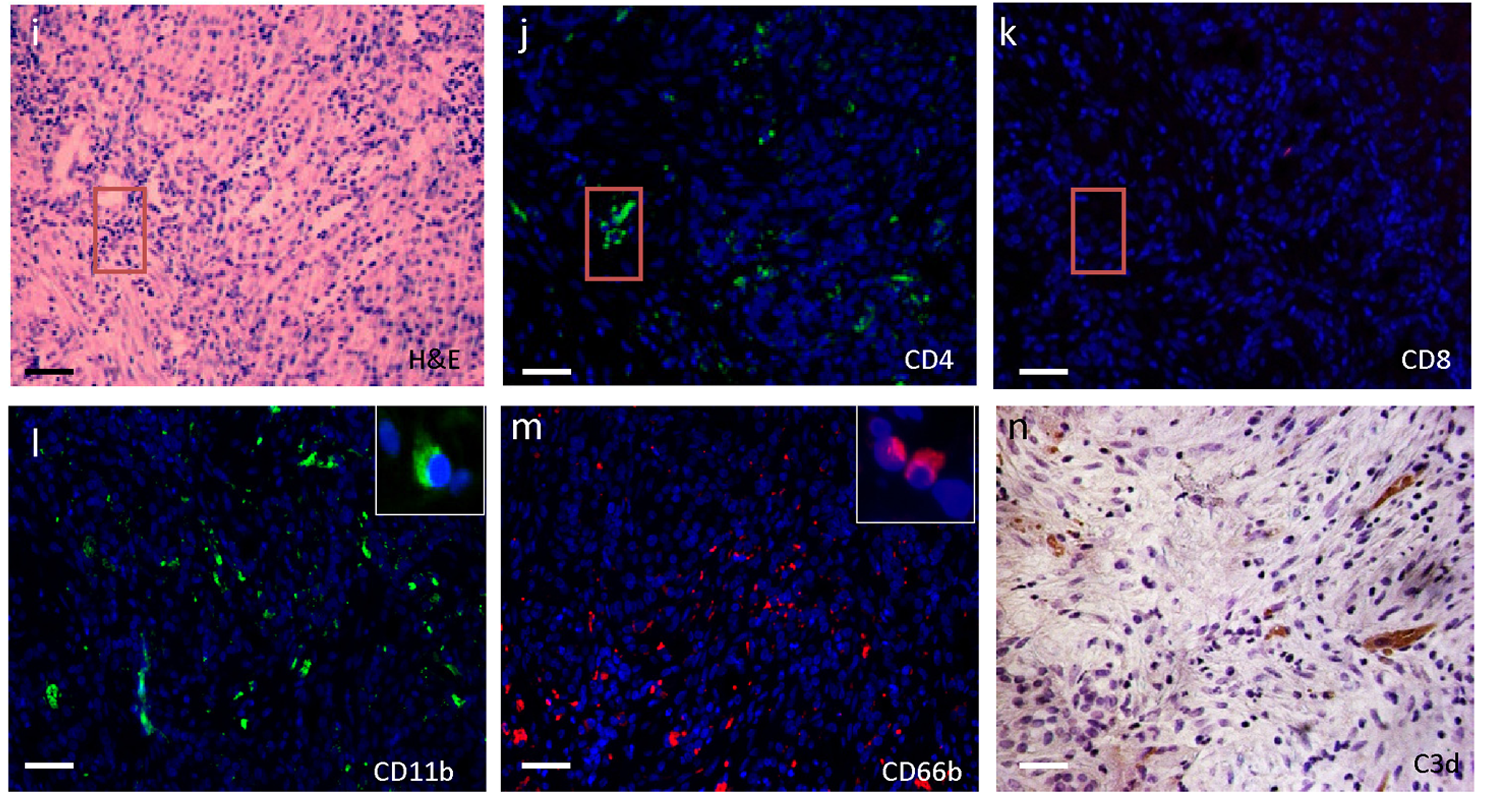Cat. #153487
AntiBirA [5B11c3-3]
Cat. #: 153487
Sub-type: Primary antibody
Unit size: 100 ug
Availability: 1-2 weeks
Target: BirA R118G
Class: Monoclonal
Application: IF ; WB
Reactivity: E.coli
Host: Mouse
£300.00
This fee is applicable only for non-profit organisations. If you are a for-profit organisation or a researcher working on commercially-sponsored academic research, you will need to contact our licensing team for a commercial use license.
Contributor
Inventor: Brian Burke
Institute: A*STAR Accelerate Technologies Pte Ltd
Tool Details
*FOR RESEARCH USE ONLY
- Name: AntiBirA [5B11c3-3]
- Alternate name: BirA antibody, bioR antibody, dhbB antibody, JW3941 antibody, BirA miniTurbo antibody, BirA/miniTurbo
- Clone: 5B11c3-3
- Tool sub type: Primary antibody
- Class: Monoclonal
- Purpose: Marker
- Conjugation: Unconjugated
- Molecular weight: 35 kDa
- Strain: C57BL/6
- Reactivity: E.coli
- Host: Mouse
- Application: IF ; WB
- Description: Monoclonal antibody which specifically detects BirA in E.coli samples. Background and Research Application E.coli BirA is a well-characterized multiFn protein that either catalyses the transfer of biotin to biotin carboxyl carrier protein (BCCP), an acetyl-CoA carboxylase subunit or, alternatively, binds to the biotin operator resulting in transcriptional repression of the biotin operon. This protein also activates biotin to form biotinyl-5'-adenylate and transfers the biotin moiety to biotin-accepting proteins. A mutant BirA (R118G) shows loss of DNA binding ability and promiscuity of substrate biotinylation. These properties of BirA R118G were used to develop an in vivo proximity labelling technique that identifies potential interacting proteins (BioID). In the BioID method, a protein of interest is tagged with BirA R118G and expressed in live cells. Addition of the biotin to the culture medium results in biotinylation of proteins in vicinity of the bait. The biotinylated proteins can then be affinity purified with biotin binding proteins such as streptavidin or avidin even under harsh denaturing conditions and subsequently identified by mass spectrometry or immunoblot analysis.One of the drawbacks of the BirA/BioID is its slow biotinylation kinetics making it unsuitable for the study of dynamic processes. To overcome the hurdle directed evolution of BirA R118G was used to generate two BirA variants with superior enzymatic activity: (i) 35 kD TurboID, with 15 mutations relative to wild-type BirA; and 28 kD miniTurbo, with N-terminal domain deleted and 13 mutations relative to the original BirA. This antibody specifically detects BirA in E. coli samples.
- Immunogen: Glutathione-S-transferase (GST) fused to E.coli BirA R118G
- Immunogen uniprot id: P06709
- Isotype: IgG1 kappa
- Myeloma used: Sp2/0-Ag14
- Recommended controls: Cells overexpressing an E.coli BirA/miniTurbo construct
Target Details
- Target: BirA R118G
- Molecular weight: 35 kDa
- Tissue cell line specificity: Mouse
- Target background: Monoclonal antibody which specifically detects BirA in E.coli samples. Background and Research ApplicationE.coli BirA is a well-characterized multiFn protein that either catalyses the transfer of biotin to biotin carboxyl carrier protein (BCCP), an acetyl-CoA carboxylase subunit or, alternatively, binds to the biotin operator resulting in transcriptional repression of the biotin operon. This protein also activates biotin to form biotinyl-5'-adenylate and transfers the biotin moiety to biotin-...
Applications
- Application: IF ; WB
Handling
- Format: Liquid
- Concentration: 1 mg/ml
- Unit size: 100 ug
- Storage buffer: PBS with 0.02% azide
- Storage conditions: Store at -20° C frozen. Avoid repeated freeze / thaw cycles
- Shipping conditions: Shipping at 4° C
References
- Creed et al. 2020. Development. 147(1):. PMID: 31806659.
- Branon et al. 2018. Nat Biotechnol. 36(9):880-887. PMID: 30125270.
- Roux et al. 2012. J Cell Biol. 196(6):801-10. PMID: 22412018.
- Choi-Rhee et al. 2004. Protein Sci. 13(11):3043-50. PMID: 15459338.
- Streaker et al. 2003. J Mol Biol. 325(5):937-48. PMID: 12527300.
- Kwon et al. 2000. J Mol Biol. 304(5):821-33. PMID: 11124029.





